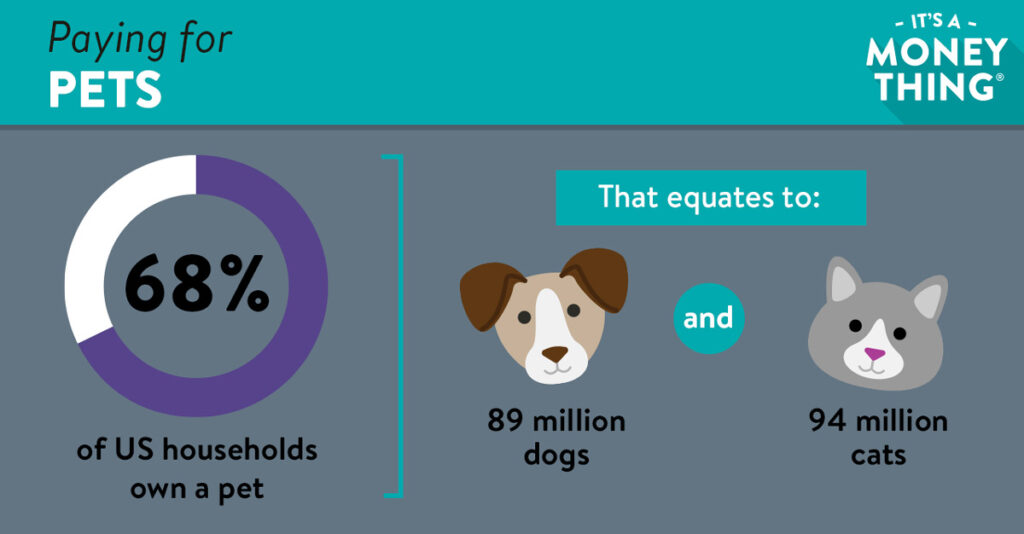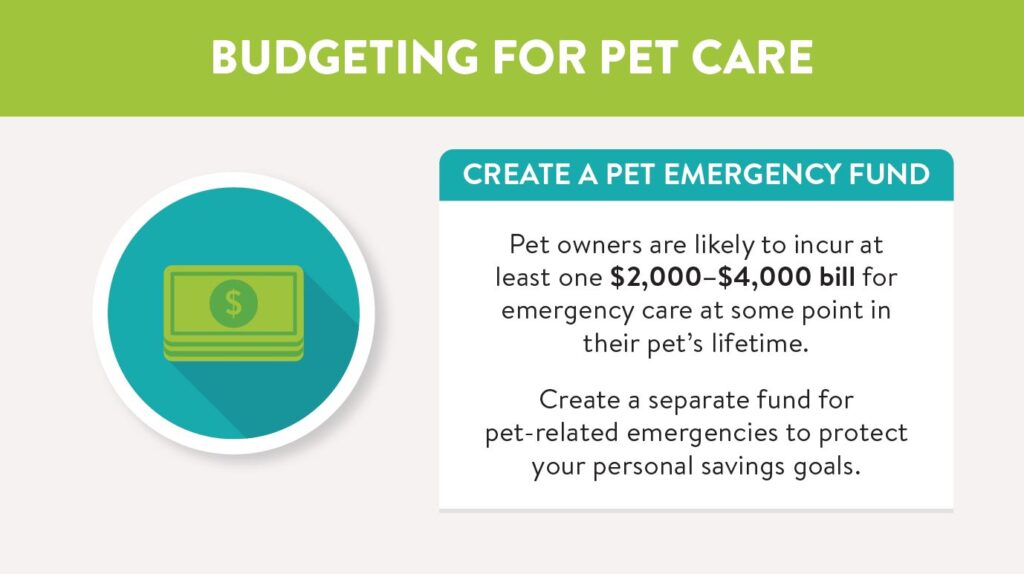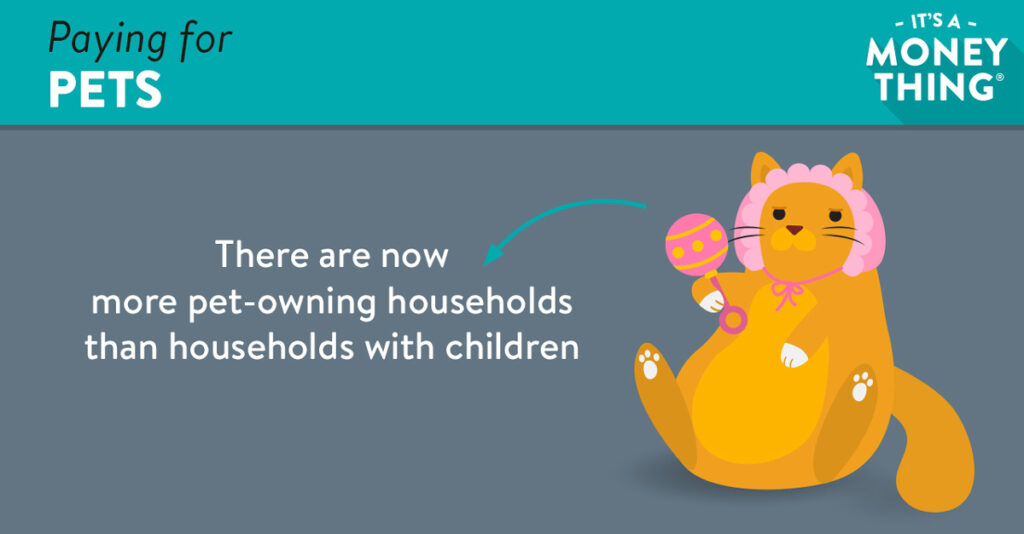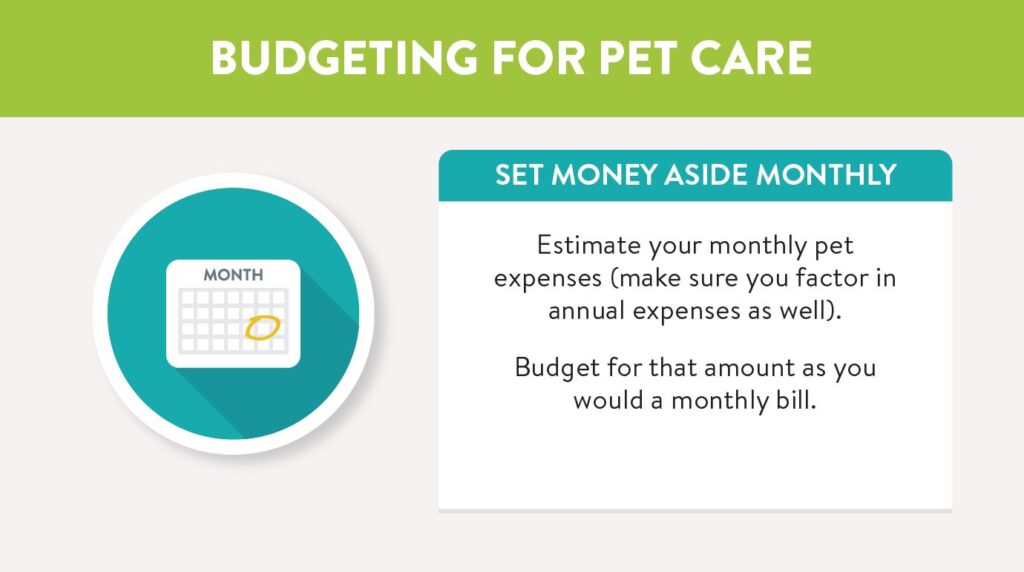
3 hidden expenses of pet ownership
The love and companionship our furry friends provide is priceless. But it’s impossible to ignore the effect that pet ownership has on our wallet.
Nearly 70% of all U.S. households own a pet, according to the American Pet Products Association. That translates into an estimated $86 billion spent on food, supplies, medical care and pet services in 2018.

Like walking the dog or scooping out the litter box, budgeting is a part of basic pet care.
If you’re thinking about getting a new pet, start by looking at your finances. You want to ensure that you can provide for your pet’s regular needs and respond to emergencies.
Searching for pet expense worksheets online is a good starting point. It will provide rough estimates for things like adoption fees, food, medicine, supplies and pet services. But it can be challenging to anticipate all of the ways a new change will influence your monthly spending.
To help you prepare, we’ve highlighted three categories of “hidden” expenses.
Though all three are related to pet care, they’re often left out of the average pet budgeting worksheet and can take you by surprise. By factoring in the hidden expenses of pet ownership, you’ll be better able to keep your pet happy, safe and well cared for.
3 pet ownership expenses to remember
We’ve created this guide with dogs and cats in mind, but similar costs exist for other pets.
Pet-proofing
When you welcome a new pet into your home, you’ll likely pick up a few items to make their stay cozier.
A plush dog bed, a fancy scratching post or other pet furniture helps turn your home into a shared environment where your pet can sleep and play comfortably.
Modifying your living space also makes your home safer for your pet. Identifying and eliminating potential hazards before you bring your pet home helps reduce preventable injuries and illnesses, not to mention the associated veterinary bills.
Depending on your pet and living situation, pet-proofing might include a combination of the following expenses:
- Window screens and/or outdoor fencing: Barriers in strategic places keep your pet from escaping and getting into trouble.
- Houseplants: Many common houseplants are toxic to your pets. Remove them or replace them with pet-friendly varieties.
- Gates and grates: These are practical ways to keep your pets away from fire hazards like fireplaces, space heaters and busy kitchens, and electrical dangers like wires and cords in office spaces and entertainment centers.
- Storage containers: Small storage solutions protect your pet from choking hazards, including batteries, buttons, paper clips, dental floss and hardware.
- Ramps and pet stairs: Human-scale staircases aren’t always safe for pets to climb. Pet steps make your home more accessible for smaller breeds. And ramps reduce physical strain on older pets with mobility or joint issues.
- Hardware: Wall-anchoring kits prevent dressers and bookshelves from tipping over. Latches and cabinet locks restrict your pet’s access to dangerous chemicals found in paints, solvents and cleaning products.
Mischief
Even if you’re a watchful pet parent, it’s reasonable to expect a little—or a lot—of mischief from your pet. This usually results in repairing or replacing damaged items in your home.
Budgeting for a little extra property damage will ease the pain when your pet decides that your brand-new shoes are his favorite chew toy.
Obedience training can help limit the frequency of pricy pet shenanigans. But you can still expect to repair or replace a few of the following items:
- Wood furniture: Table legs and chair legs are magnets for chew marks. Restore them to their former glory with wood putty and polish.
- Sofas and soft furnishings: With a pet in the house, expect more snags, rips and tears to cushions and soft furnishings.
- Curtains: You might need to replace tangled and claw-marked curtains with more durable window coverings.
- Rugs and carpets: Muddy paws, accidents and general wear and tear can dramatically reduce your floor coverings’ lifespan.
- Cleaning supplies: You might need to spend more on specialty stain- and odor-removal products or on major appliances like pet hair vacuum cleaners.
In-between veterinary bills
Medical expenses shouldn’t come as a surprise. You should budget for routine veterinary visits and have a healthy emergency fund set aside for serious medical issues.
That said, some pet health expenses fall outside of both regular checkup territory and emergency territory.
Depending on your pet’s needs, you might face one or more of the following overlooked medical expenses:
- Allergies: Your pet might be sensitive to certain allergens and require specialty foods that drive up your monthly pet food costs.
- Ear and dental care: Some breeds need extra attention when it comes to cleaning their ears and teeth. If you don’t have the ability to do it yourself, plan for extra trips to the groomer or veterinarian.
- Injuries from other animals: Encounters with other critters—both wild and domesticated—can result in bites, scratches and stings that require medical attention.
- Preventive medication: Some medicines, such as heartworm or flea and tick prevention, are a regular part of your pet’s well-being and need to be budgeted for.






